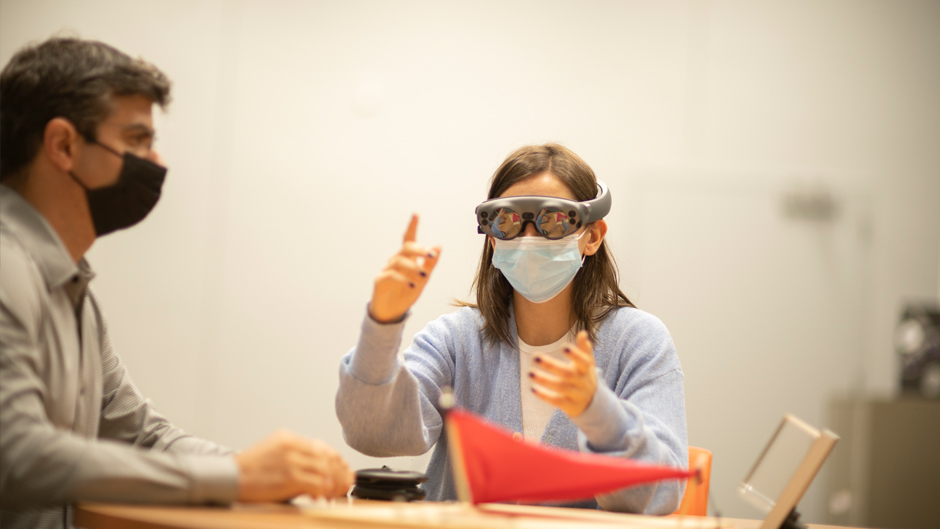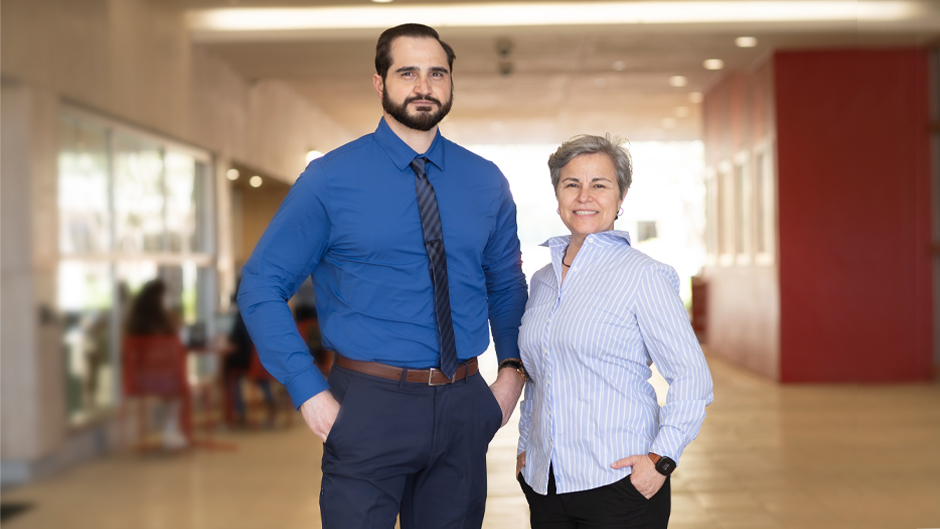An innovative study led by University of Miami College of Engineering faculty and funded by the National Science Foundation (NSF) will explore the use of augmented reality (AR) technology in teaching Statics, a foundational course for first- and second-year engineering students.
“Many students find it challenging to visualize and solve problems in which forces are applied to physical objects in a three-dimensional space,” said James Giancaspro, Ph.D., P.E., associate professor of civil and architectural engineering and graduate program director. “Without developing spatial reasoning skills, these students can become frustrated, and may leave engineering programs.”
Giancaspro is the principal investigator of the three-year project, “Improving Student Learning Using a Three‐Dimensional Immersive Learning Environment for Foundational Engineering Concepts,” funded by a $300,000 NSF grant. It is designed to bring immersive 3D experiences based on augmented reality and extended reality (XR) technologies to undergraduate engineering students.

We want our students to be able to perform 3D manipulations that are impossible with only 2D drawings using pencil and paper,” said Giancaspro. “Immersing students in an AR environment allows them to interact with both real and computer-generated objects, and learn challenging abstract concepts that are vital for success in engineering.”
Co-principal investigator Diana Arboleda, Ph.D., P.E., senior lecturer, Structural Engineering, and director, Robotics in Education, said the NSF-funded study has national implications. “This may be the most extensive trial of immersive technology in teaching Statics and the first to collect feedback and obtain outcome data from students,” she said.
Both Arboleda and Giancaspro are excited about the opportunity to bring AR technology to the college’s “Mechanics of Solids 1” Statics course, which is offered in several sections every semester. “We will be developing storyboards for the AR modules that will be implemented by the UM Information Technology team, led by Max Cacchione,” said Arboleda. “We will then deploy the modules and headsets on a pilot basis, assess the initial results, and fine-tune the program.”
The assessment of student learning outcomes will be done by the study’s two other co-principal investigators, Walter Secada, Ph.D., professor and vice dean of the School of Education and Human Development; and Nam Ju Kim, Ph.D., assistant professor, of the School of Education and Human Development. Additional support is provided by several collaborators, including Jennifer Britton, Ph.D. from psychology, Hammam Alsafrjalani, Ph.D. from electrical and computer engineering, and Renee Evans from the College of Engineering.
For the past few years, Arboleda and Giancaspro have been working on new approaches for teaching the UM Statics course, such as augmented reality tools. “When the COVID pandemic hit, we had to put the development process on pause,” Arboleda said. “But that preliminary work prepared us for the NSF grant opportunity, and we are already rolling ahead with this study.”
Giancaspro said the initial AR curriculum may be ready for pilot trials in the fall 2022 semester. “While students can wear the headsets and access the content from virtually any location, it is ideal to have everyone in the same classroom where the instructor can answer questions and get immediate feedback from attendees,” he added. “As the study moves forward, the applications will be shared with other institutions, providing access for engineering instructors and students throughout the U.S., as well as international universities.”
If the UM study leads to positive outcomes, Arboleda said the use of AR and XR applications could be a game-changer in engineering schools. “Education is rapidly moving to the metaverse,” she said. “This initiative could have a wide impact on other STEM courses where immersive tools could significantly improve learning outcomes.”

